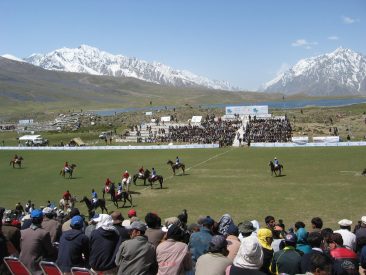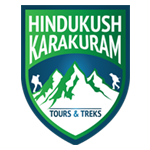GHIZAR VALLEY
KNOWN AS THE LAND OF LAKES
- HOSPITALITY
- TRADITIONS AND FESTIVALS
- NATURAL BEAUTY
- PARADISE FOR TROUT FISHING
- PASTURES
- SOFT TREKS
- MODERATE TREKS
- UNSPOILED NEW DISCOVERED TREKKING
- FALLEN HEROES
Ghizar district comprises of several independent and isolated valleys including Puniyal, Gupis, Yasin, Ishkoman, Phunder with population of 1,70,000 as distinct feature of each. It is rich with historical, cultural, archeological and natural beauty. It is located in the west of Gilgit the famous Shandur Chitral Road passes along the district with attractions of local villages and spectacular views of snow covering peaks, rivers and lakes all along the way. The people of the district are peaceful welcoming the visitors with warm hearts. There are hotels, guest houses and home stay facilities for the travelev rs to dine and stay in peaceful environment.
The district is unique because of geographical spread and connectivity as well as cultural diversity. Traditions, norms and values add to the beauty of the valley. Trekking, mountaineering, culture tours, trout fishing and rafting in the Ghizar River is the most common attraction in the district.
The significance of the district is quadrupled by the Shandur Pass over which the historical and traditional polo festival is played between arch rival teams of Gilgit and Chitral every summer in higehest polo ground of the world. Apart from this festival there many local and national festivals are celebrated in the district with ancient cultural beauty in which the Tukhum Razzi (Seed Sowing) Festival of Yasin is one of the most interesting festival celebrated to the beginning of the Spring Season every year. Such as Yasin in the Ishkoman Valley it is also celebrated in the spring season and many other festivals are worth to visit and see for the visitors and culture lovers.
Ghizar district has great potential for trekking within the region and across the region to explore the natural beauty. There are more than 30 trekking area crossing passes from one valley to another valley with diverse culture of each valley. There passes easy to moderate and technical suiting to capacity of the people.
There are numerous peaks from 5000 meters to 6600meters for low altitude climbers and for those who want to climb in short time along with a trekking. There are many peaks waiting for climbers to scale and give a name that are unnamed yet.
Yasin Valley
Geographically, Yasin Valley of Gilgit Baltistan is the meeting point to the Central Asian countries in the Hindukush range of great mountains Gilgit Baltisistan, to the North east its borders connect with Ishkomman Valley which has long border along the Korumbar and Wakhan Corridor and Chilinji Pass to Chupursan upper Gojal,to the South its border connects with the Yarkun Vally of Chitaral district of NWFP now KPK to continue to Afghanistanse. Because of this geographical importance ancient invaders and conquerors used these passes to proceed to the Sub-Continent. It has very interesting history from very early 747 to 751 Yasin was the centre Little Bolor by that Gilgit Baltistan under the control of Tibetans, the Chinese came to Yasin via Darkot Pass. Russian invaders used the Darkot Pass with to enter Yasin in1890 but returned unseen peering from the pass.
It was based on local rulers, as one of the strongest ruler Gohar Aman who was fully against the foreign invasion to Gilgit Baltistan, when Maharaja of Kashmir forced Northern Areas of Pakistan he pushed back troops the with several wars and won the one his ambush at Bop Singh in1952. Later on after his death 1863 Maharaja of Kashmir sent a large troop of Army in the revenge and attacked at Muduri (ruins can be seen) Fort Yasin and killed around 2000 people, they played very bad role as said young children threw high in the air and cut them with swords when fell and pregnant women ripped and hacked the unborn babies. This hurting story is still remembered in the valley. There are short walks around, like Yasin Fort some parts are remained. Britsh took interest here by fearing Russian advance over the Darkot and Broghil Passes, and opened its agency in 1877 in Gilgit and control over Yasin
It was considered one of the remotest regions in Gilgit Baltistan but the modern technology and sacrifice of martyr (shaheed) Lalik Jan Nishan-e- Haider made it accessible in a short time by improving the road to Yasin. The valley is very beautiful with spectacular views of the snowcapped mountains of Hindu Kush and passing through the beautiful villages of Punial and Gupis on the Shandur road leads to Chitral. The people of Yasin are unique in their hospitality as compare to any other. There simple guest houses, home stays and hotel to stay and dine. The home stays will encourage people to interact with others. This will help people to develop their confidance.
Ishkoman Valley
The Ishkoman valley, running north to South to join the Gilgit Valley, divides the Karakorum Range from Hindu Kush. It was once the principality of Chitral when there was the Kingdom system before 1972. It incorporated to Pakistan by the same year. It hasn’t long history of itself it was under the rule of Yasin and Chitral during the kingdom system in Gilgit Baltistan. The early people were Brusho, later the arrival Shins moved them towards Yasin now the people here speak the languages of Khowar the language of Chitral in some lower village, Shina in the proper Ishkoman and Wakhi in Emit. The people here are hospitable like the other parts. The valley is a junction of numerous trekking routes with beautiful landscape and amazing natural sceneries. Trekking in the valley is heart touching smooth paths and spectacular views of snow covering peaks and lush green camping sites with crystal clear spring water all along the treks. There are both kind of treks you have an option to go on easy trek or difficult one. The valleys has some of the beautiful lakes on your way to trek you come across the lakes, thick forest, rivers, glaciers and lush green meadows. Short walks around Ishkoman are interesting there are walks of hours from the main villages to climb some hills around with good views to the down villages. Simple guest houses and home stays facilities are there to stay and dine. You can visit the traditional houses and can speak to the families in the home stays.
Some fishing resorts have been set up along the Ishkoman River where you can enjoy with your own fishing if interested or you can ask owners to fish for you.

